|
Bastille Day is celebrated in France every year on July 14th and in many French-speaking regions worldwide, including the USA. The French also refer to this day as “Le Quatorze Juillet” (the 14th of July) or “La Fête Nationale” (The National Day.) On July 14th, 1789. a group of revolutionaries stormed the Bastille prison in Paris marking the start of the French Revolution. The Bastille was a symbol of the tyrannical rule of the Bourbon monarchy. Without going into a detailed history lesson, suffice it to say King Louis XVI and his wife Marie Antoinette were overthrown, ending the “Ancien Régime.” The Bastille prison was torn down by the order of France’s new revolutionary government, with the last stone removed in 1790. And we all know the fate of Marie Antoinette. Although it was a violent time, Bastille Day is a celebration in France with parades, fireworks, food, wine, and dancing. And even though I never need a reason to pour a glass of wine, it’s a perfect time to open a bottle and toast Bastille Day! So, I’m celebrating with French rosé and sharing my favorite crab quiche recipe from Julia Child’s “Mastering the Art of French Cooking.” Fleur De Mer Côtes de Provence Rosé 2022 This rosé is from the Côtes de Provence, the largest appellation in Provence, located in southeastern France. The name of this wine means “flower of the sea,” paying homage to the lavender fields that blanket the landscape of Provence and thrive in the warm sun and fresh, crisp seaside air. Winemaker Florian Lacroux selected Cinsault, Grenache, and Carignan to form the core of this blend, supported by other Provençal grapes in a beautifully blended and layered rosé. Nose: Lovely floral aromas with hints of lavender, subtle red berries, white stone fruit, herbs, and minerality. Palate: White peach, raspberry, strawberry, melon, vibrant acidity, minerality, and a touch of salinity, with a dash of citrus zest on the finish. Fresh, lively, and playful! Alcohol: 13% SRP: $22 Pairing suggestions: Enjoy as an aperitif or pair with crab quiche, grilled seafood, veggie salads, or roasted chicken. Crab Quiche Recipe I began making this quiche in the early 1980s, and it always brings a smile and a contented sigh to those who eat it. I always use fresh lump crabmeat for this recipe and allow the quiche to cool slightly before slicing. Please forgive the stained pages, as I tend to occasionally splatter when cooking! I’m sure that Julia would have appreciated how well-worn this book is! Whether you’re celebrating Bastille Day or life in general, enjoy it with a glass of rosé and crab quiche! Your palate will thank me! Joyeux jour de la bastille! Until next time…
Cheers! Penina To leave a comment or if you have an inquiry, please contact me at [email protected] This month features treats from Argentina! The sultry tango dance might come to mind when one thinks of Argentina. And when it comes to wine and food, Malbec and chimichurri sauce lead the way in creating an enticing dance on the palate! Domaine Bousquet is a family-owned winery and Argentina’s largest producer and exporter of organically grown wines. It is located in the Gualtallary Valley, high up in the Tupungato district of the Uco Valley, where altitudes can reach up to 5,249 ft. The winery was founded in 1997 by winemaker Jean Bousquet, originally from Carcassonne in Southwest France, where his family expands four generations of winemaking. Domaine Bousquet is noted for its use of French and Argentinian winemaking techniques. French-born Anne Bousquet, daughter of Jean and President and CEO of the company, stated, “The objective of the Bousquet family was to unite our tradition of European winemaking with the ideal agricultural conditions in Mendoza.” Domaine Bousquet is the only estate with sand as its primary soil. Sandy soil drains well and retains heat that helps to produce highly aromatic wines. With minimal rainfall, water delivery to the vines is controlled by an irrigation process through a drop-by-drop system with pure mountain run-off. This creates lower pH in the grape, resulting in higher acidity and more color in the wine. All Domaine Bousquet wines are made from 100% organic fruit ever since the first vines were planted. Special attention is always taken to preserve the purity of the organic fruit. The benefits of a cool climate, sandy soil, controlled water irrigation, and healthy organic grapes, set the stage for quality wines. Domaine Bousquet Reserve Organic Malbec This wine is a beautiful blend of 85% Malbec, 5% Merlot, 5% Syrah, and 5% Cabernet Sauvignon. The grapes are harvested from the estate’s best plots with low yields. And the wine is aged for ten months in French oak. Nose: Plum, dark berries, spice, and a hint of floral. Palate: Layered with blackberry, raspberry, dark cherry, chocolate, and pepper with a long finish. Nicely balanced with soft tannins and good acidity. Alcohol: 14.5% SRP: $15-18 Pairing suggestions: Grilled meat, pasta, stews, and seared tuna. Argentina is the original home of chimichurri sauce, and it is considered a household staple and always made with fresh, natural ingredients. It can be served as a stand-alone condiment or used as a marinade. Every Argentine household claims its own version of the chimichurri recipe. But broadly speaking, green chimichurri (chimichurri verde), the most familiar version, is a combo of finely chopped fresh green herbs and garlic blended with olive oil and red wine vinegar or lemon juice. The following is a classic chimichurri recipe, although Anne Bousquet suggests you “feel free to play around a bit and make it your own -- just like we do in Argentina!” Chimichurri With Grilled Flank Steak Ingredients:
1 small shallot cut into wedges 2 garlic cloves ¼ cup of red wine vinegar – or lemon juice if you prefer ¾ cup flat-leaf parsley, stems removed and finely chopped – or a 50/50 blend of parsley and cilantro 1 tbsp fresh oregano, stems removed. ¾ cup extra virgin olive oil 1 ½ tsp kosher salt 1 tsp freshly ground black pepper (or you can amp up the heat with a little paprika or cayenne) Instructions: Combine shallot, garlic, vinegar, and salt in a bowl and let it sit for 10 minutes. Stir in parsley (and/or cilantro) and oregano, and mash together gently with a pestle. Whisk in olive oil using a fork, then season with salt and pepper. In Argentina, half the chimichurri recipe is usually set aside and reserved as a sauce. The remainder is combined with the beef in a covered dish and chilled for at least three hours or overnight before grilling. When ready, remove beef from the chimichurri marinade, pat dry, and grill. Serve beef with reserved chimichurri sauce on the side. And don’t forget the wine! “There’s a reason why Malbec is Argentina’s most beloved red wine,” says Anne. “Not only does Malbec thrive in the high desert growing conditions of Mendoza, especially in our high-altitude vineyards in the Uco Valley, but when it comes to pairing with steak, few wines can hold a candle to the bold aromatics, abundant fruit flavor, and smooth tannins of Malbec, especially with leaner cuts such as top sirloin and flank steak. Nothing spices up a nice, juicy steak like a generous dash of chimichurri sauce and a glass of Malbec!” Until next time… Saludos y disfruta de tu comida! Penina To leave a comment or if you have an inquiry, please contact me at [email protected] This month’s Wine & Dine features palate-pleasing treats from Sicily! Valle Dell’Acate is a family-owned company in the heart of southeastern Sicily’s historic Vittoria Classico region, in the Biddini Soprana e Sottana district near Acate. The estate is a picturesque setting surrounded by 200 acres of vineyards, certified as biological with a focus on sustainability. Founded by Giuseppe Jacono at the end of the 19th century, the Jacono family has been active in vine growing and winemaking since Vittoria became Sicily’s epicenter for exporting wine to France during the 1800s. Today the company is run by the dynamic Gaetana Jacono, part of the family’s sixth generation of winemakers. Vittoria is home to Cerasuolo di Vittoria DOCG and Cerasuolo di Vittoria Classico DOCG, the first and only wines with DOCG status in Sicily, established in 2005. Cerasuolo di Vittoria DOCG is the pride of the grape growers, winemakers, and bottlers that accomplished the prestigious Protected and Guaranteed Denomination of Origin for the Cerasuolo di Vittoria and Cerasuolo di Vittoria Classico wines. Cerasuolo means ‘cherry-colored’ in Italian, and the wine is known for its cherry red to violet color with floral and fruity aromas. Only the indigenous grapes of Nero d’Avola and Frappato are allowed in the blend. It is a wine that pairs well with a variety of cuisine. Gaetana said, “The Cerasuolo, for its blend of Frappato and Nero d’Avola, is a wine that goes well with more elaborate fish dishes and walks next to the food without overpowering it.” Valle Dell’Acate Cerasuolo di Vittoria DOCG Classico The blend for this wine is 60% Nero d’Avola and 40% Frappato. It is aged 12 months in barrels and tonneaux and then bottle-aged for a minimum of nine months. Nose: Floral, red and dark fruit, berries, spice, and herbs. Palate: Aromas segue onto the palate with notes of minerality, nice acidity, and smooth tannins. Cherry, strawberry, and vanilla linger on the finish. Alcohol: 13.5% SRP: $28,99 Pairing suggestions: Aged cheese, risotto, game, grilled fish, or spicy cuisine. Gaetana created a special tuna entree to pair with this wine. In Gaetana’s words, “Tuna is the Sicilian fish par excellence that we find in the tradition of our cuisine in an infinite variety of recipes. The fresh tuna in Cerasuolo di Vittoria wine sauce with sweet and sour is my special recipe created for Valle dell’Acate. Our winery produces the best native wines of the area. This recipe is a meeting of flavors that unfold in a sweet and sour union of different textures and flavors. The crunchiness and sweetness of the almond combine with the caramelized consistency of onion, accompanying the sea flavor of the freshly seared tuna. Finally, the reduction of Cerasuolo di Vittoria binds all the ingredients like a velvety and spicy drape with hints of fruit. This dish represents the triumph of Sicilian flavors in a light and healthy version.” FRESH TUNA IN CERASUOLO WINE SAUCE WITH SWEET AND SOUR Ingredients (serves four) 2.2 pounds of filet of fresh tuna 1.5 fluid ounces of white vinegar oregano kosher salt 2 white onions a glass of water extra-virgin olive oil For the Syrup 1 pint of Cerasuolo di Vittoria red wine 9 ounces of sugar 1 star anise 1 tablespoon of black pepper 3 cloves 1/2 a cinnamon stick 1 handful of almonds Put the wine over a high flame in a pot with the star anise, black pepper, cloves, and cinnamon stick. Once the wine begins to boil, lower the flame until it reaches a temperature of 220° Fahrenheit (using a thermometer – it will take approximately 30 minutes). Turn the flame off. Slice the onion thinly and sauté in a covered frying pan at high heat with a bit of olive oil. Add two tablespoons of sugar and bathe with the vinegar when the onion turns a bit golden in color, then lower the flame. Salt the water and cover the onions with it. When the onion has begun to shrivel, take the cover off the frying pan and cook until the water has virtually evaporated. Sprinkle the tuna with the oregano and sear in a frying pan with a little olive oil, one minute per side. Season with a bit of salt. Pour the syrup onto a platter, place the tuna on top, and finish the dish with the onion and almonds, which have been toasted in their skins and chopped, not too finely. Enjoy!
Until next time… Saluti e buon appetito! Penina To leave a comment or if you have an inquiry, please contact me at [email protected] This month we’re traveling to Jumilla, a small wine region in southeastern Spain, to bring you treats for the palate! For an in-depth exploration of Jumilla, and its star grape Monastrell, the region’s principal grape variety, please click on the link below to read my article. http://thewineknitter.com/1/post/2022/01/visiting-royalty.html While visiting Jumilla in 2021, I had the opportunity to meet with the owners, David Ferraje and Helio Abellán of Bodegas Carchelo. Over a sumptuous meal, I tasted their portfolio of impressive wines. Bodegas Carchelo was founded in 1990 and is located at the foot of the Sierra del Carche mountains, reaching an altitude of 1371 meters above sea level. They have estate vineyards situated in five subregions of Jumilla, each with varying soil profiles and climate exposures that add to the character of these wines. In addition to producing high-quality wines, Bodegas Carchelo also focuses on respecting and protecting the environment. So let’s wine and dine Jumilla style! Carchelo DOP Jumilla 2020 Carchelo is an award-winning organic certified and vegan-certified wine made with 100% Monastrell. The grapes are hand-harvested from various estate vineyards with different soils, altitudes, and exposures to seek the balance and character typical of this territory. This wine is aged for six months in 225-liter French oak barrels and a minimum of three months in bottle. Nose: Red fruit, berries, plum, and spice. Palate: A fresh and lively wine with notes of red and dark berries, spice, balsamic, balanced acidity, and it is smooth with a persistent finish. Alcohol: 14.5% SRP: $16.99 Pairing suggestions: Medium cheese, pasta, tapas, and charcuterie. Bodegas Carchelo suggests pairing this wine with a traditional Spanish dish. Tortilla De Patata (Spanish omelet) Tortilla de Patata is a traditional dish commonly served throughout Spain. It is offered in cafes and bars as a tapa or appetizer and served as a light dinner in Spanish homes. Since there are so few ingredients, the key to making a perfect dish is to use excellent olive oil and fresh eggs. The oil is used for cooking the potatoes, and its flavor can be tasted throughout the finished dish.
The Spruce Eats provided the following recipe that serves six as an entree or 8-10 servings as an appetizer. Prep time: 15 minutes Cook time: 30 minutes Cool time: 15 minutes Ingredients: 6 - 7 medium Yukon potatoes peeled 1 medium yellow onion diced into 1/4” pieces 1/2 tablespoon kosher salt, or to taste 1 1/2 to 2 cups Spanish olive oil 5 large eggs Instructions: 1) Hand slice the peeled potatoes in half lengthwise. Then, with the flat side down, cut the potatoes into approximately 1/8-inch thick pieces. 2) Place the potatoes and onions in a large bowl, sprinkle with salt, and gently mix together. 3) In a large, heavy, nonstick frying pan, heat 1 1/2 cups of olive oil over medium-high heat. Carefully place the potato-onion mixture into the frying pan, spreading it evenly over the surface. The oil should almost cover the potatoes. Turn down the heat slightly so the potatoes do not burn—you want them to fry slowly until tender and creamy. 4) Cook the mixture until the potatoes are done—if a slice of potato breaks easily when poked with a spatula, the potatoes are done. Remove the mixture from the heat and drain, or remove with a slotted spoon. Let the potatoes cool off. To speed up the process, carefully spread them out on a baking sheet. 5) Crack the eggs into a large bowl and beat them by hand with a whisk or fork. Pour on top of the cooled potato-onion mixture. Gently mix together with a large spoon. Let sit for about 5 minutes. 6) In a 9- or 10-inch nonstick pan, heat 1 to 2 tablespoons of the remaining olive oil over medium heat. Add the egg mixture, spreading it out evenly. Allow the egg to cook around the edges. Carefully lift up one side of the omelet to check if the egg has slightly browned. The inside of the mixture should not be completely cooked, and the egg will still be runny. 7) When the mixture has browned on the bottom, remove the pan from the stove and place a large dinner plate bigger than your pan on top. Turn the pan alongside the plate, so the tortilla sits on the plate. 8) Place the frying pan back on the stove and add just enough remaining oil to cover the bottom and sides of the pan. Let the pan warm for 30 seconds or so. 9) Slide the omelet from the plate into the frying pan. Use the spatula to shape the sides of the omelet and allow it to cook for 3 to 4 minutes. Turn the heat off and let the tortilla sit in the pan for 2 additional minutes. Next, slide the omelet onto a plate or cutting board and slice it into 6 to 8 pieces, like a pie. Enjoy with a glass of Carchelo! Until next time… Salud and disfrute de su comida! Penina To leave a comment or if you have an inquiry, please contact me at [email protected] Happy New Year! Wine & Dine Time is starting off 2023 with treats from Alentejo, Portugal. Fitapreta Vinhos sits at the edge of Évora, located in Alentejo, Portugal’s largest wine region. The land and fortified manor house, Paço do Morgado de Oliveira, was founded in 1306 and was originally owned by the church. Fast forward to 2016. After being without a winery and vineyards of his own, winemaker and producer of award-winning wines, António Maçanita purchased the property in 2016 and began restorations. The estate has 126 hectares of land and 33 hectares of vineyards. One of the vineyards is the Chão dos Eremitas vineyard, which grows Tinta Carvalha, an ancient indigenous grape variety.. On a recent visit to Fitapreta, António talked about this ancient variety. “Tinta Carvalha is a very light-skinned grape, and a light variety, with nice acidity. And one day it disappeared. It probably vanished because in the late 1980s and early 1990s wine producers were looking to make wines more concentrated and more powerful. As a result, the lighter grapes were “punished” and disappeared. We are the only ones in Portugal growing Tinta Carvalha at this moment. I want to bring back to the blends all the lighter grapes.” António is quite engaging and his enthusiasm is contagious! He has much to say about Alentejo and winemaking. And I have much more to say about him and Fitapreta. A more focused article will be forthcoming. In the meantime, let's wine and dine! Tinta Carvalha 2020 This wine is 100% Tinta Carvalha an ancient grape from the Chão dos Eremitas vineyard, handpicked from 51-year-old vines. The wine is aged for 12 months in stainless steel vats and is the only 100% Tinta Carvalha wine produced in Portugal. Nose: Sour cherry, red berries, spice, and earth. Palate: Light and fresh with red fruit, cranberry, strawberry, spice, minerality and acidity. A refined balance between tannins and acidity. Alcohol: 12% SRP: $33 Pairing suggestions: meats, game, stews, grilled portobellos, or fatty fish. FitaPreta suggests this delicious and easy recipe to pair with the wine. Glazed King Oyster Mushrooms Ingredients for four servings:
2 tablespoons unsalted butter 1 tablespoon light soy sauce 1/4 teaspoon dark soy sauce 1/2 teaspoon honey 1 clove garlic finely grated 1/4 teaspoon black pepper 1 pound king oyster mushrooms 2 tablespoons vegetable oil 1 scallion chopped Instructions: To prepare the glaze: Gently melt the butter in a small saucepan and then add the light and dark soy sauce, honey, grated garlic, and black pepper. Mix well and set aside. Clean the mushrooms and slice lengthwise in approximately 1/4 inch slices. They should be thick. Heat large pan over medium-high heat and liberally abrush with oil. Add one layer of mushrooms at a time with space in-between, making sure that they sear, not steam! Sauté each side until golden brown, about four to five minutes per side. Repeat layers until all mushrooms are cooked. After sautéing, return ALL the mushrooms back to the pan and pour the glaze over them, and immediately turn off the heat. Carefully toss the mushrooms in the glaze until they are covered. Garnish with chopped scallions and serve with rice or glass noodles. Enjoy with a glass of Tinta Carvalha! Until next time… Saúde and aproveite sua comida! Penina To leave a comment or if you have an inquiry, please contact me at [email protected] Beginning with October and every month to follow, I will feature one wine and a pairing suggestion and recipe from the wine producer or winemaker. To get the ball rolling, I have two winners this month, both from Italy. San Felice Il Grigio Chianti Classico Gran Selezione DOCG 2017 San Felice estate is located in the heart of Chianti Classico in the commune of Castelnuovo Beradenga. With over 140 hectares of vineyards, 80% is devoted to Sangiovese, which is at the heart of their production. Their presence extends to the prestigious terroirs of Montalcino and Bolgheri as well. This wine is made with 80% Sangiovese, sourced from the estate’s top vineyards. The other 20% is a blend of native Tuscan varieties such as Abrusco, Pugnitello, Malvasia Nera, Ciliegiolo, and Mazzese. The wine is aged 24 months, 50% in large 60-100-hectoliter Slavonian oak casks and 50% in 225- and 500-liter French oak barriques. It is then aged in bottle for eight months. Nose: Floral, juicy fruit, sour cherries, smoky wood, herbs, and spice. Palate: A beautiful and expressive wine with notes of plum, dark berries, and spice fused with elegance and subtlety and balanced with lush tannins and acidity. Hints of vanilla and sour cherry linger on a long finish. Alcohol: 13.5% SRP: $38.99 Pairing Suggestions: Wild game, grilled meat, aged cheese, pasta, truffle risotto, or sip with a chocolate dessert. Winemaker Leonardo Bellaccini suggests the following recipe to pair with the wine, prepared by Borgo San Felice Executive Chef Juan Quintero. MACARONI, BEURRE NOISETTE, MUSSELS, LAMB AND ANISE Time: 20 minutes Ingredients for four servings: Sauce 100g (3.5 oz) unsalted butter (for the beurre noisette or brown butter) 120g (4.2 oz) cleaned mussels (without the shell) 100ml (3.38 fl oz) of white wine 4 garlic cloves 2 tablespoons of anise seeds 100 ml (3.38 fl oz) of mussel water Garnish 160g (5.6 oz) Fatless lamb meat (loin) 2 Nori seaweed sheets 50ml (1.6 fl oz) olive oil Black pepper 300g (10.5 oz) High Quality “maccheroncini” (pasta) Preparation Open the mussels in a pan with white wine, garlic, and parsley. Cover, and after a couple of minutes, they will be open. Turn off the heat and remove the shell of the mussels and strain its water, preserving it. Separately melt the butter and let it cook until it turns brown; add the mussel water so the butter doesn’t get burned. Add the anise and the mussels, and turn off the heat. Blend until smooth. There is no need to add salt because the mussel water is salty enough. Cook the pasta in plenty of salted water, drain and then add to the cream of butter. For serving, chop the lamb meat like a classic tartare, then season with salt, oil, and pepper, and cover with nori seaweed. On the base of the plate, arrange the lamb with seaweed, and finally, serve the pasta on top. Donnafugata Floramundi Cerasuolo di Vittoria DOCG 2020 Donnafugata has five estates throughout Sicily, with one in Vittoria located in southeastern Sicily. It is in this special region where Cerasuolo di Vittoria DOCG is produced. It is considered one of the most noteworthy wines produced in Sicily and the only wine in Sicily with a DOCG status! The indigenous grapes Nero d’Avola and Frappato are the only varieties allowed in the blend. Nose: Intense floral aromas envelop the senses with notes of violet, cherry, red berries, and spice that segue onto the palate. Palate: This is a fresh and juicy wine with personality. Hints of rose, strawberry, and spice linger on the finish. Soft tannins and a crisp finish add to the entertainment. Alcohol: 13% SRP: $30 Pairing Suggestions: Mature cheese, risotto, seared tuna, and calamari. Donnafugata suggests pairing the following recipe with Floramundi. Swordfish with Citrus Fruit and Pistachios
Time: 20 minutes Difficulty: Intermediate Ingredients for four servings: 4 swordfish steaks, about 200 g (7 oz) each 1 bunch of wild fennel 2 cloves of garlic 1 chili pepper a handful of sultana raisins, another of pistachios orange juice and rind juice of one lemon 1 glass of white wine 0-type flour, butter Instructions Flour the swordfish steaks. In a slightly buttered pan, sauté the garlic and chili pepper. As soon as the garlic browns, remove it. Add the floured fish and sauté. Then add the white wine, sultana raisins, wild fennel, and minced orange peel. As soon as the wine evaporates, add the orange and lemon juice and a pinch of crushed pistachios. Cover and continue cooking; if necessary, add citrus juice. Serve with the reduced sauce and a handful of pistachios covering the fish, garnishing the platter with two orange slices. Enjoy! Cheers! Penina To leave a comment or if you have an inquiry, please contact me at [email protected] |
Categories
All
|



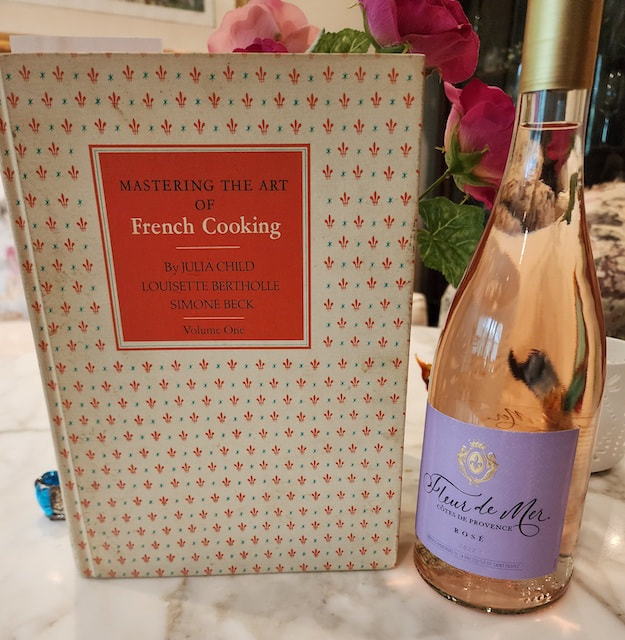
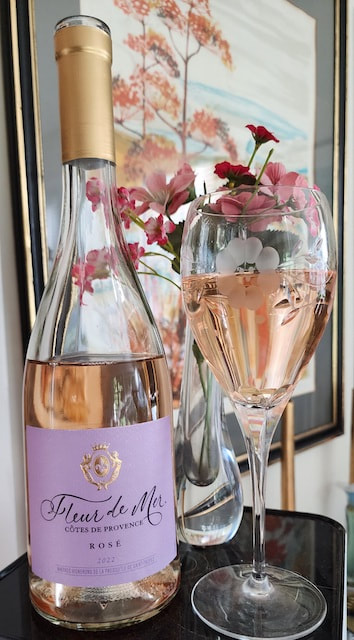
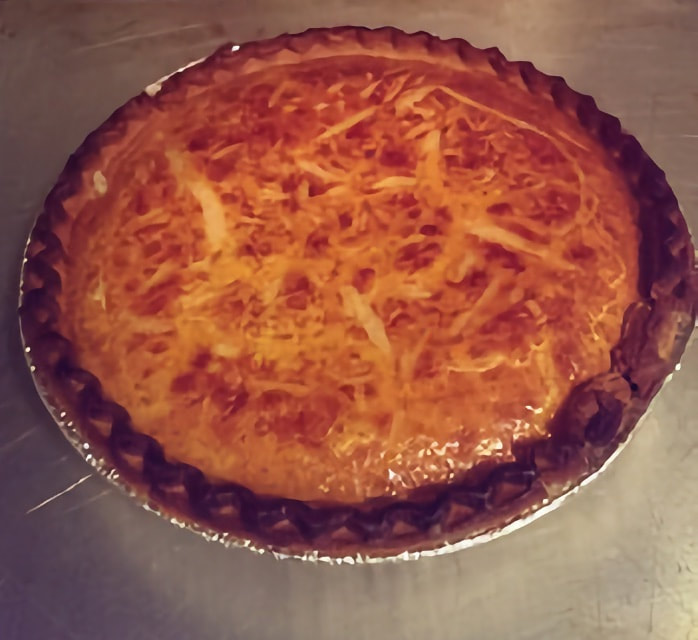
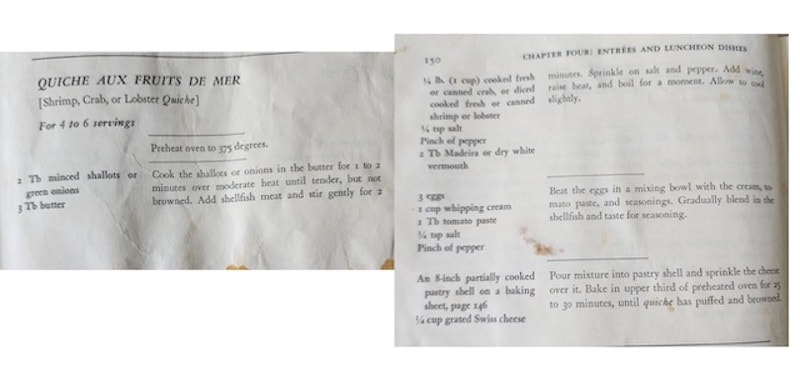

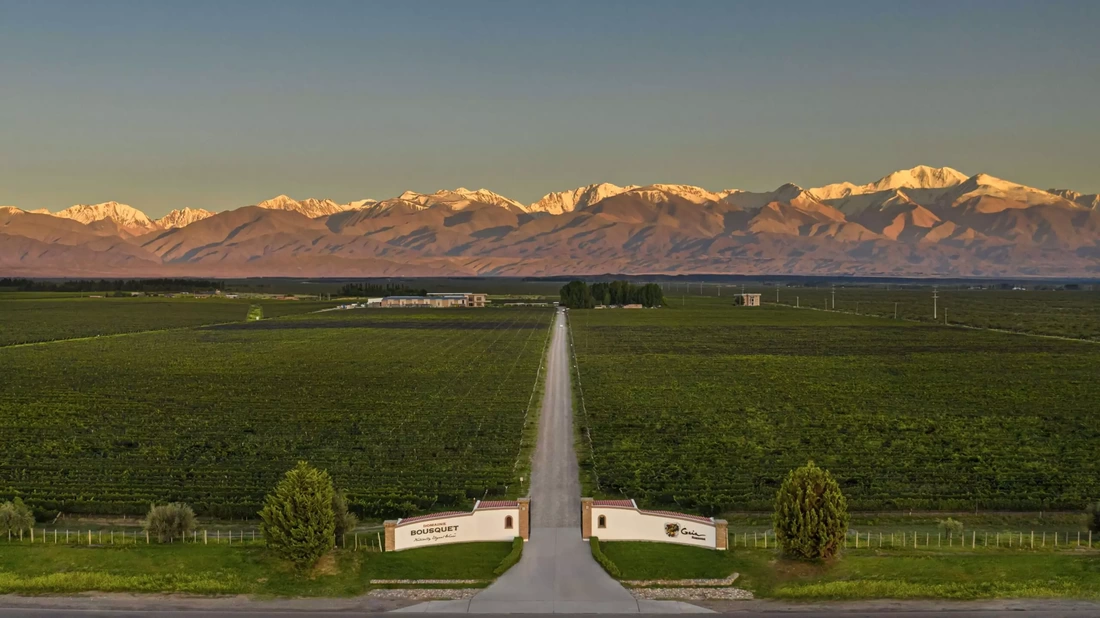
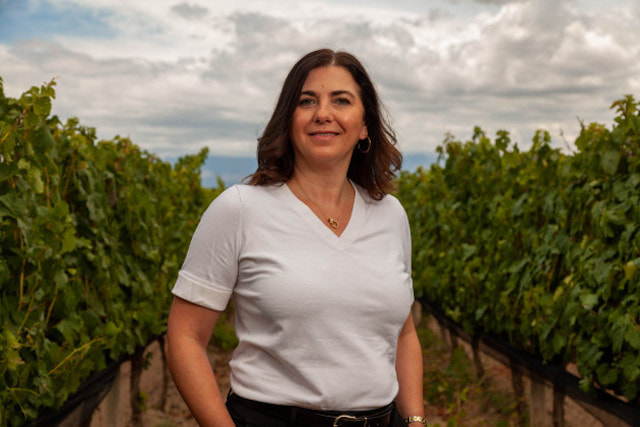
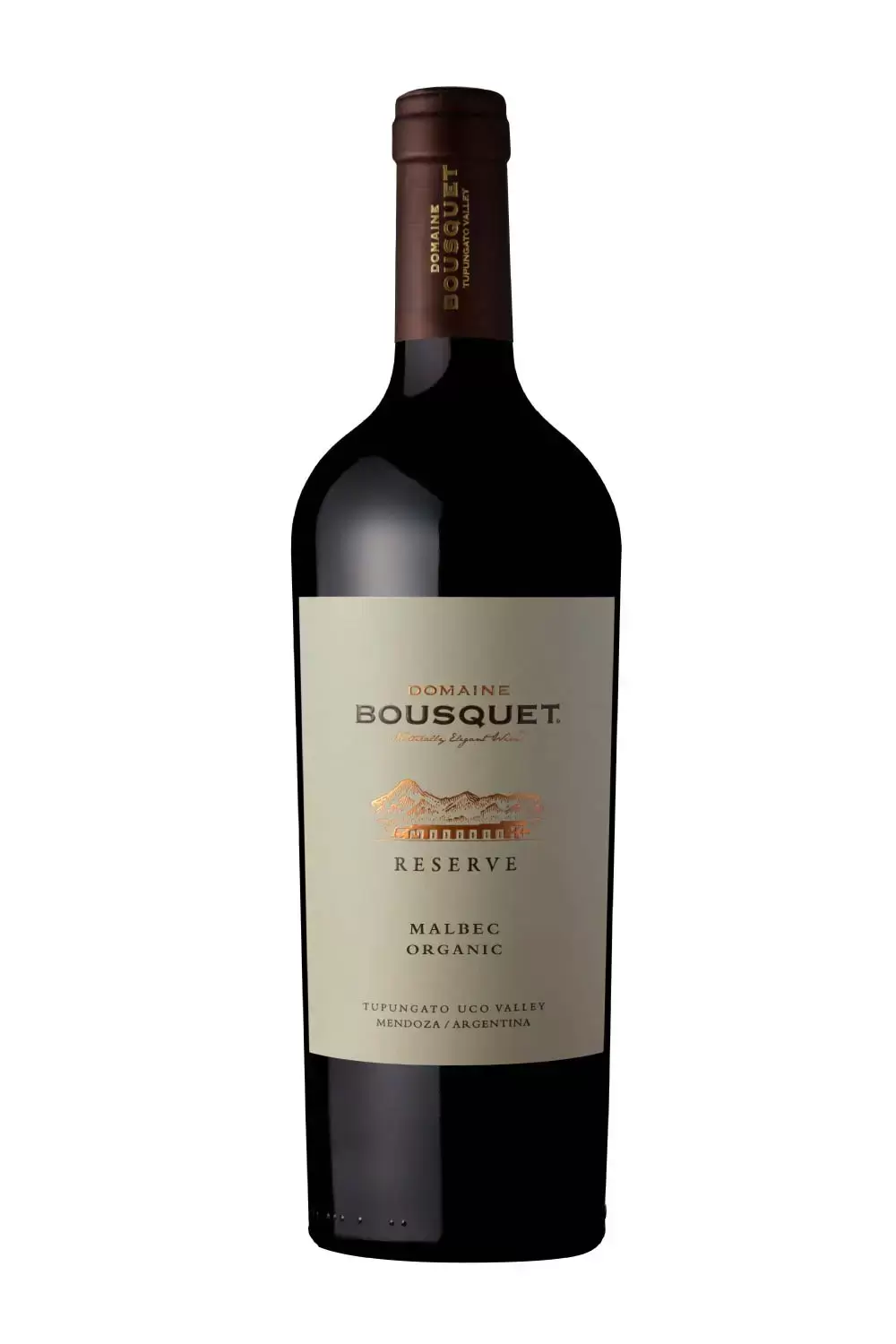
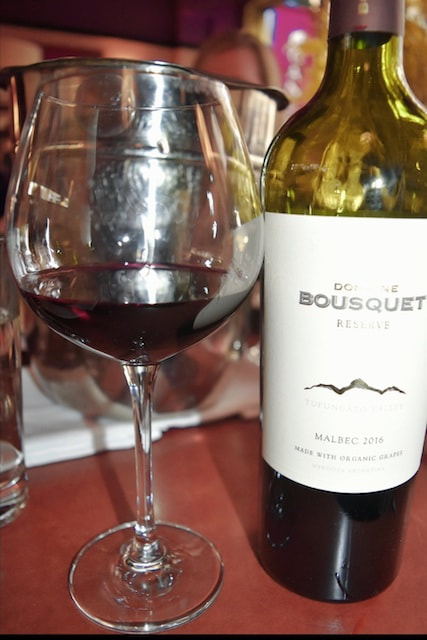
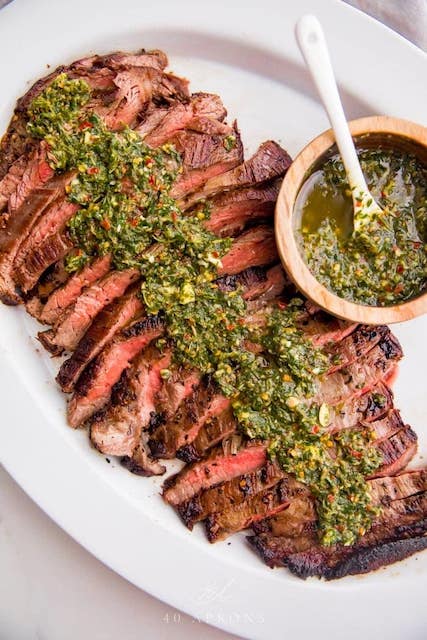
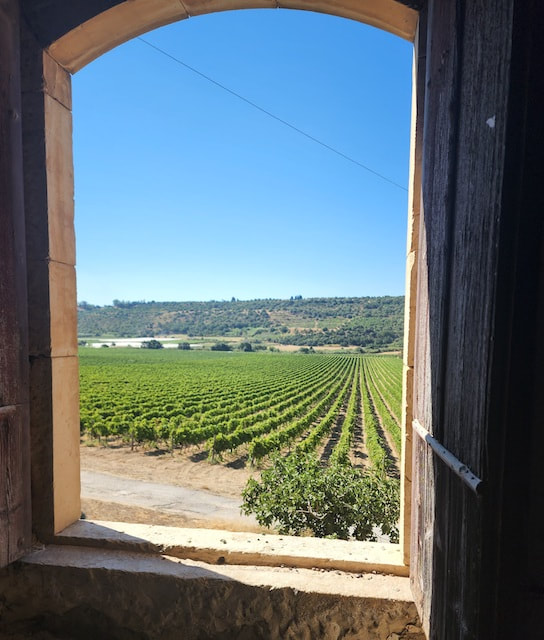
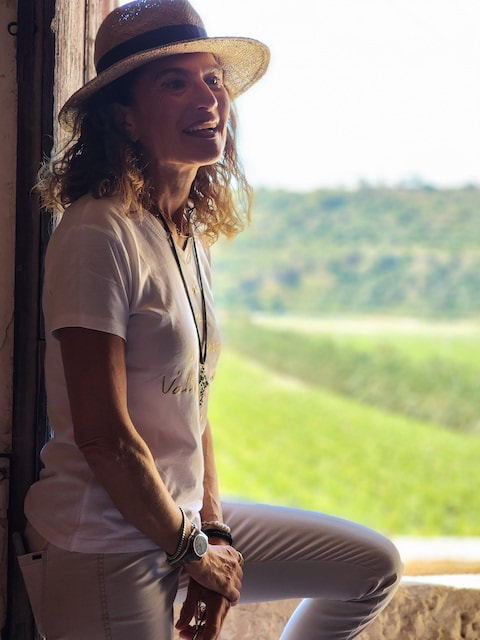
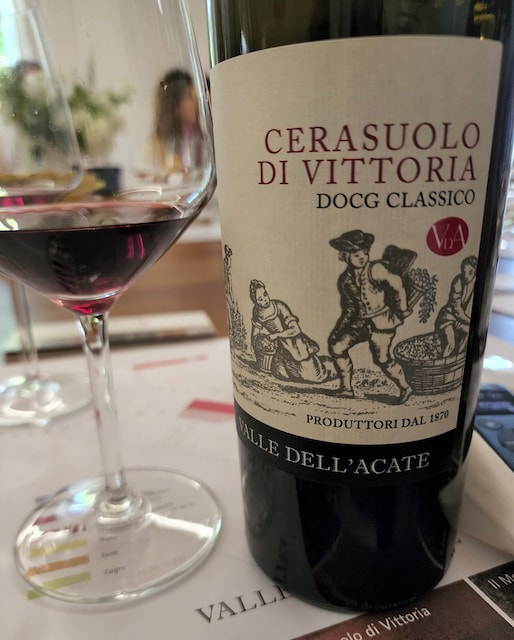
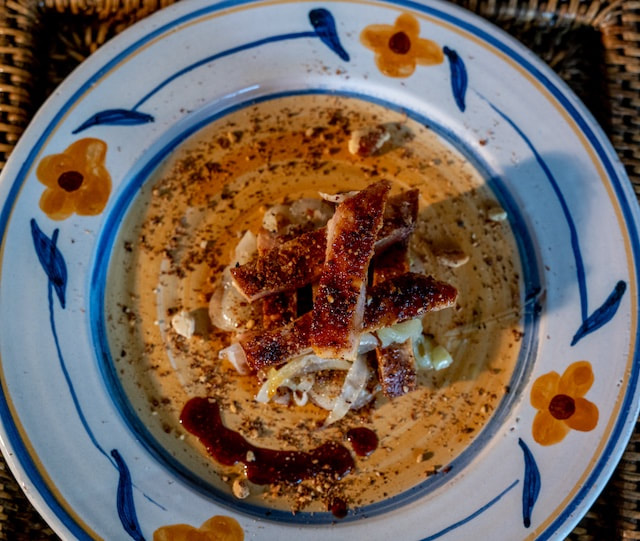
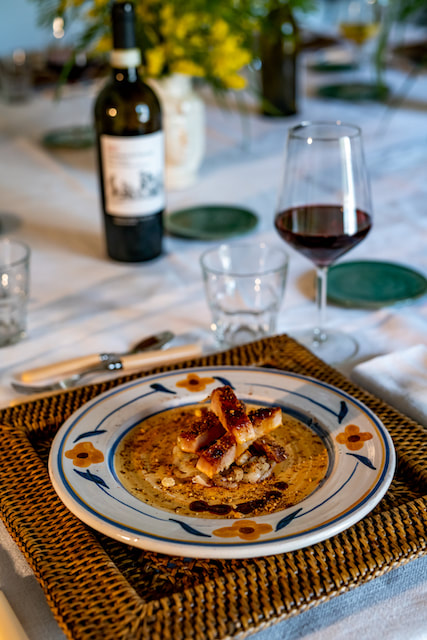
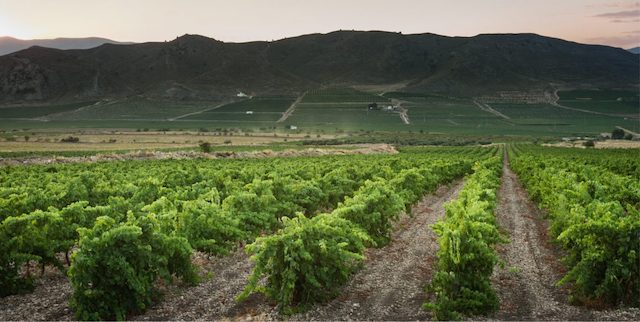
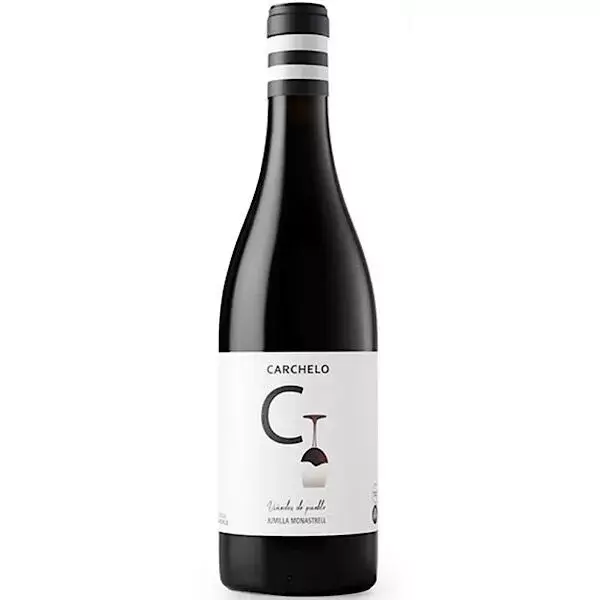
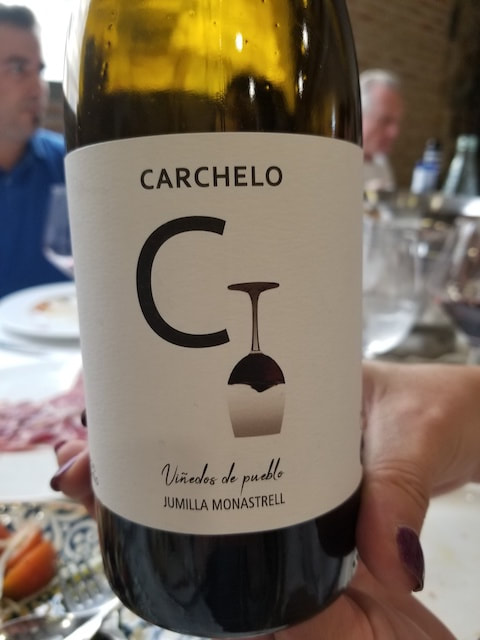
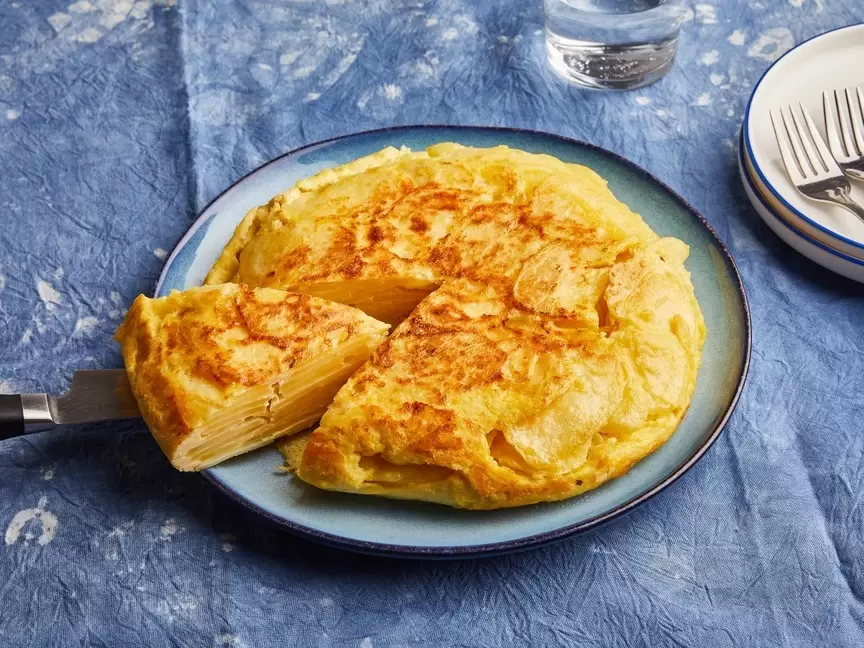
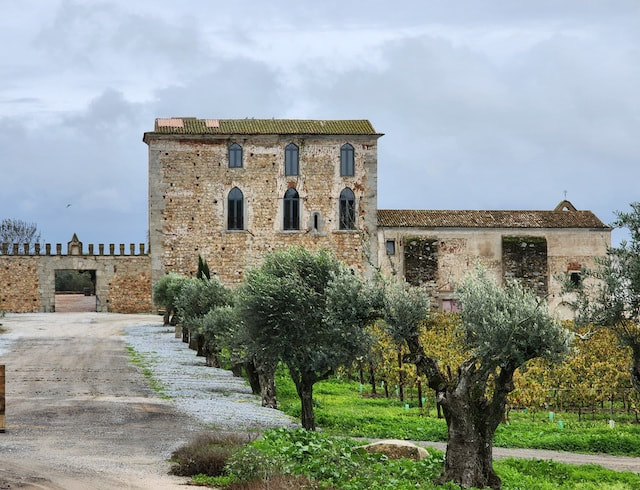
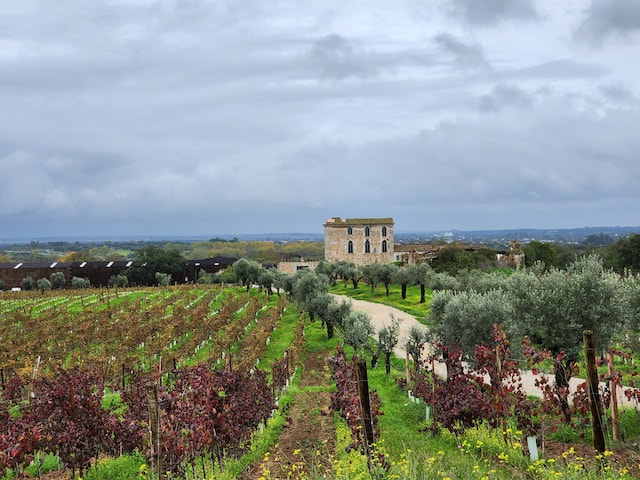

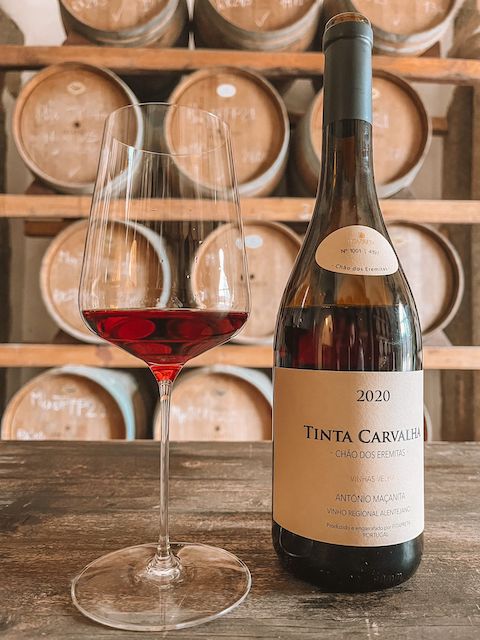
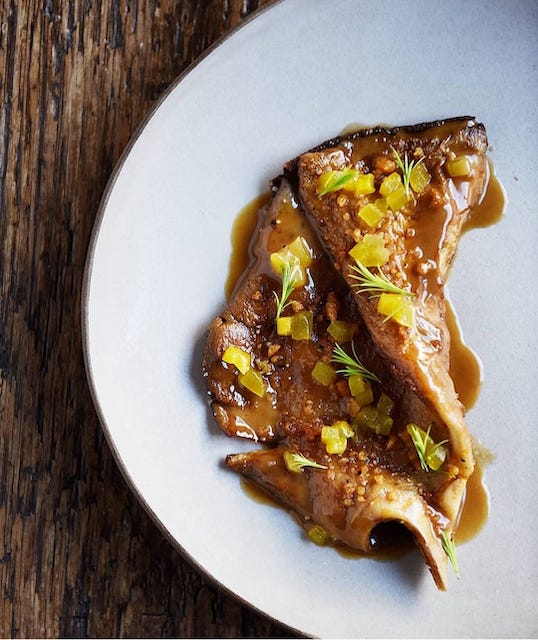
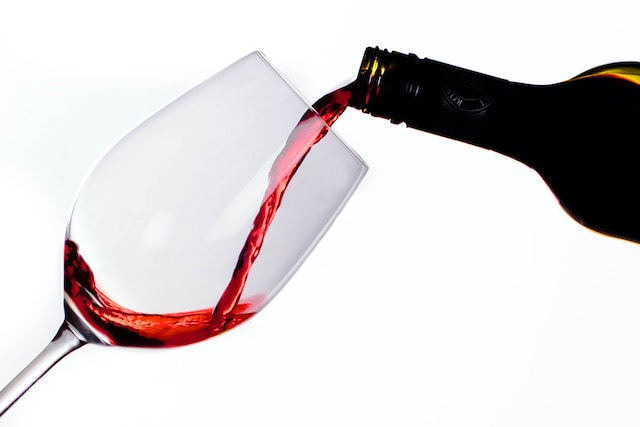

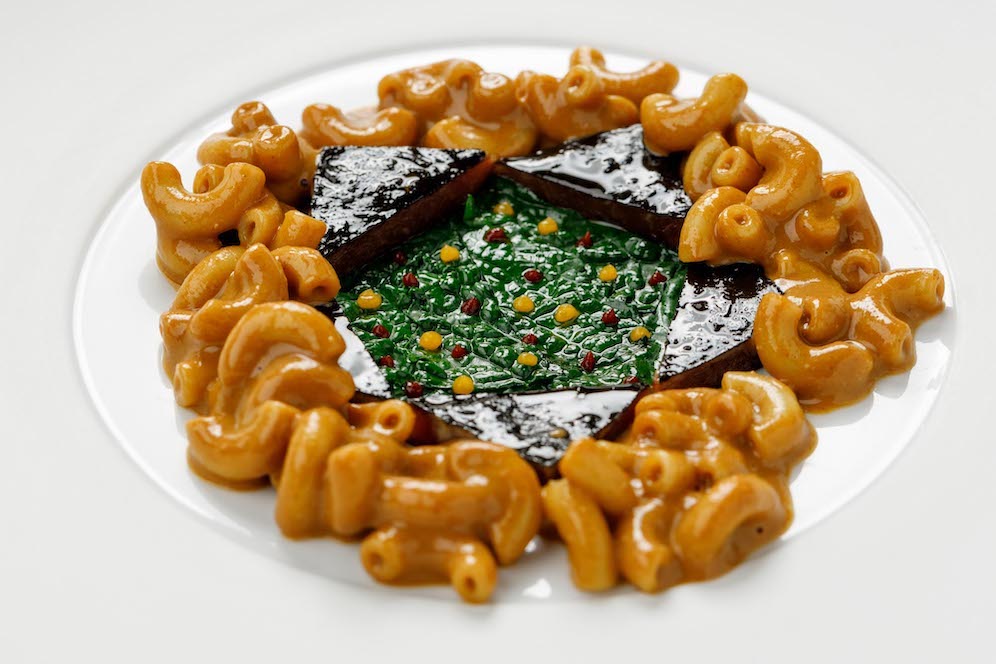
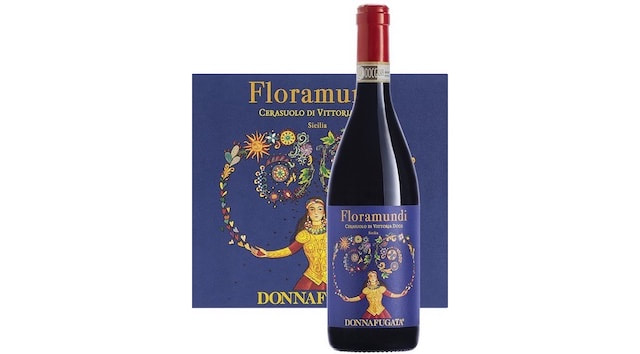
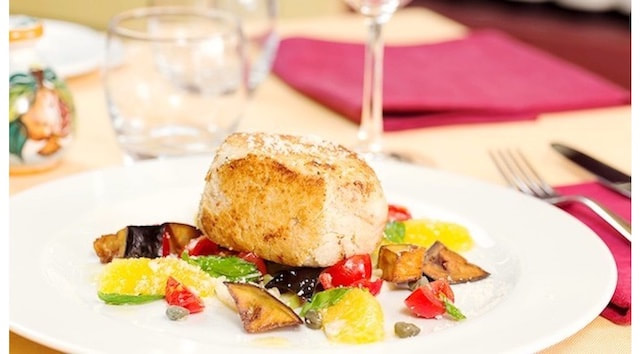
 RSS Feed
RSS Feed